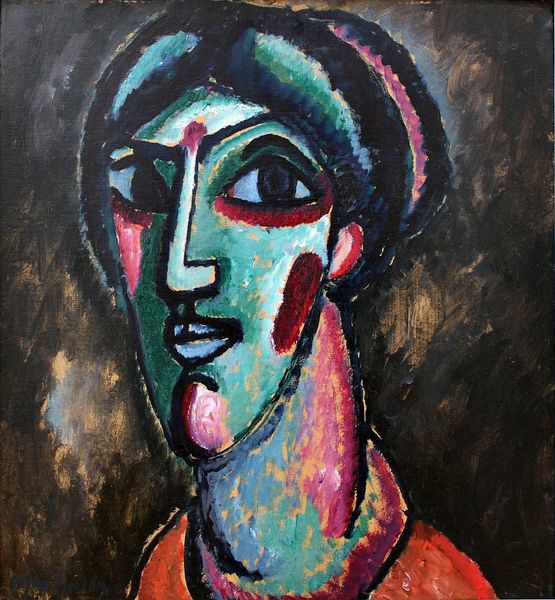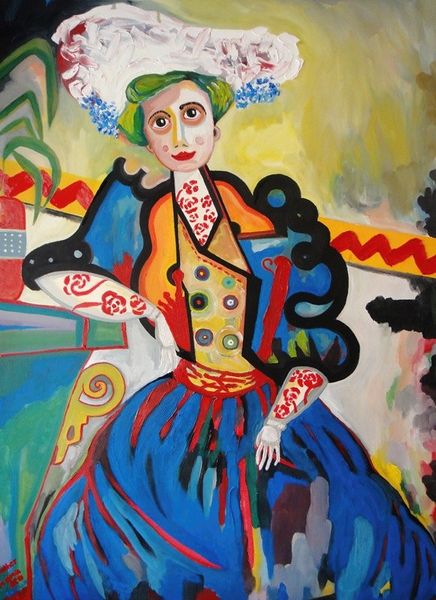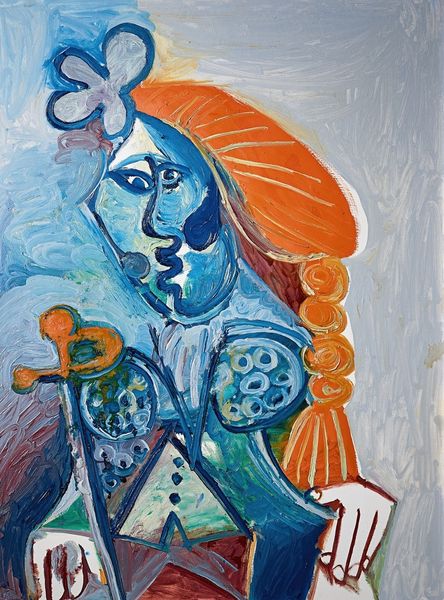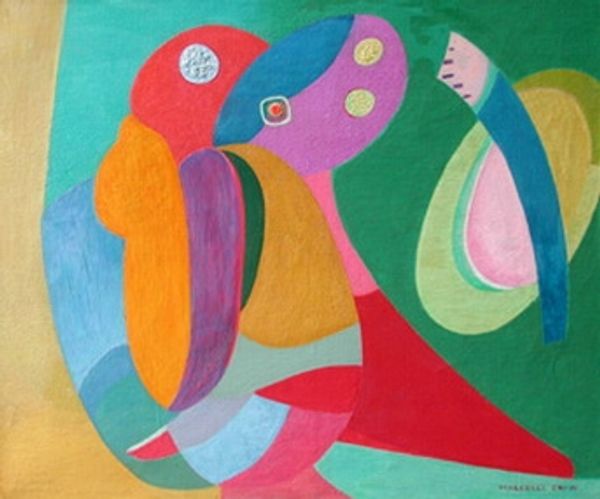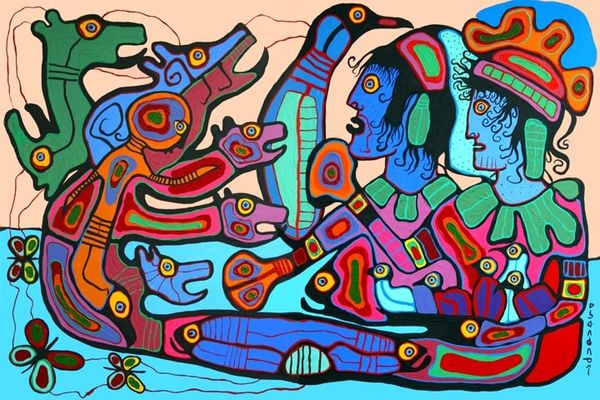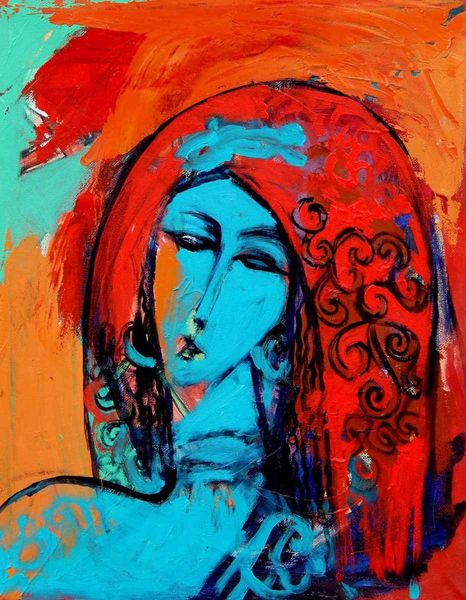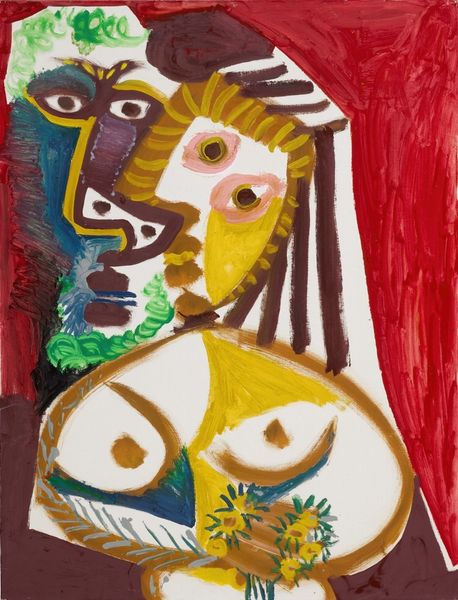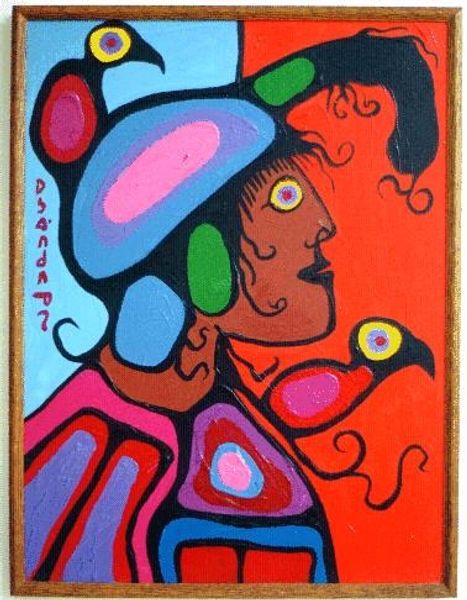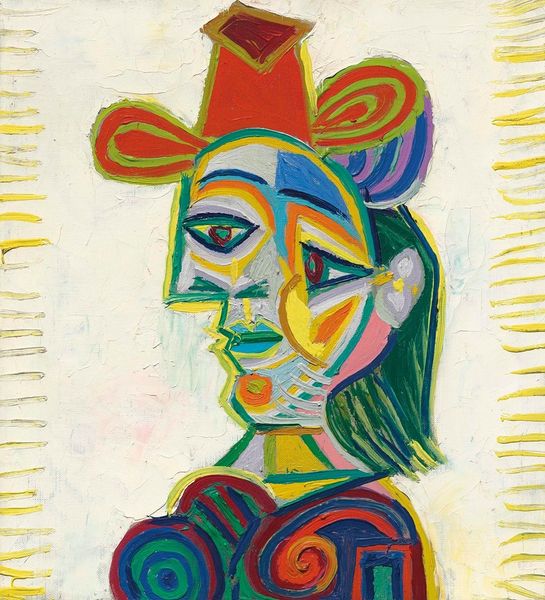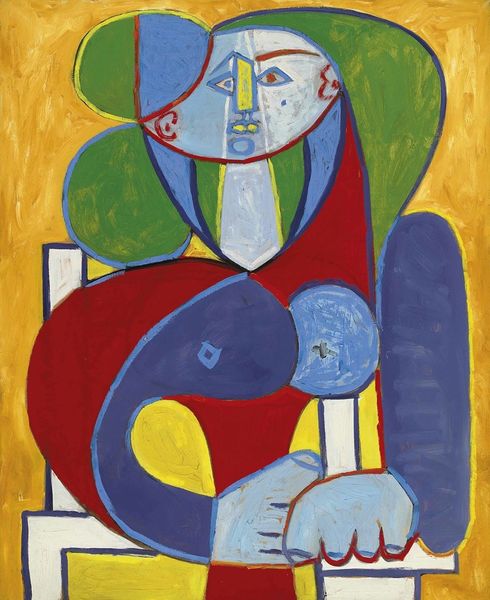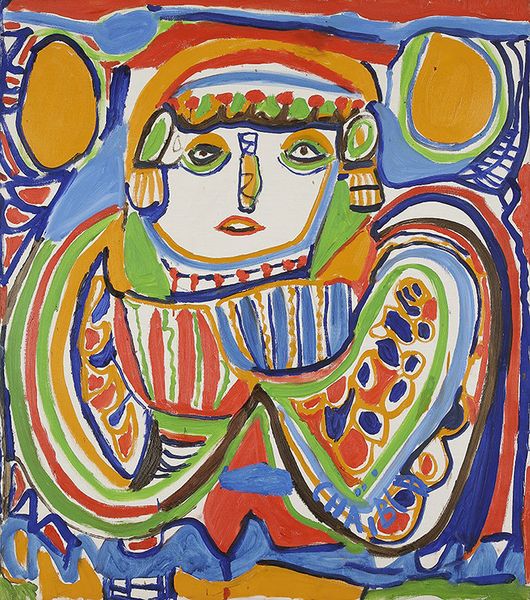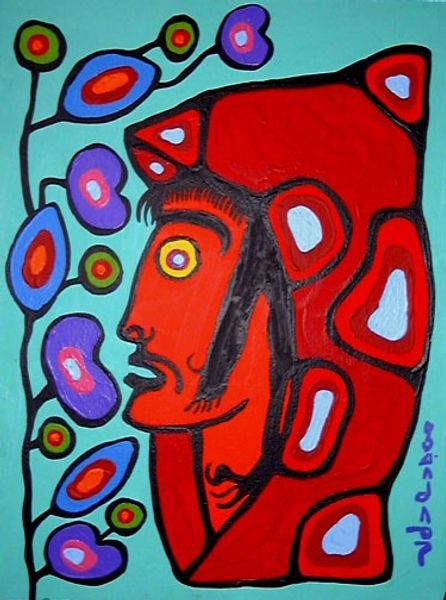
painting, acrylic-paint
#
portrait
#
painting
#
graffiti art
#
pop art
#
acrylic-paint
#
figuration
#
naïve-art
#
naive art
#
pop-art
#
portrait art
Copyright: Chaibia Talal,Fair Use
Editor: Here we have “Blue Veiled Woman” by Chaibia Talal, rendered in acrylic paint. It's a bold and colorful portrait that almost feels like folk art, though with a very contemporary edge. What jumps out at you about this piece? Curator: It's fascinating how Talal, an untrained artist, gained such recognition. In terms of its socio-political context, the painting challenges Western art historical norms by presenting a raw, unfiltered female perspective rooted in Moroccan culture. How does the figure's adornment, like the veil itself, play into ideas about cultural representation? Editor: I guess I hadn’t really considered the veil in that light. I just thought it added to the vibrancy. You mean it's not just decorative? Curator: Well, decoration is never neutral. Considering that Talal began painting in the 1960s, a period of significant social change, might her choices regarding dress codes and the way women were represented carry symbolic weight, perhaps subtly negotiating traditional expectations? What could that symbolism represent to you? Editor: Perhaps it represents a defiance against stereotypical depictions? I guess, beyond the aesthetic appeal, there's this assertion of identity, particularly for women within a specific cultural context. Curator: Exactly. Talal’s lack of formal training allowed her to sidestep the established artistic institutions that often dictate subject matter and style. She creates an incredibly personal vision, reshaping expectations around Moroccan women. Editor: I can definitely see that now. Looking at her use of color and form with this new context, it almost reads as a visual manifesto. Curator: Indeed. Art like this forces us to reconsider who gets to represent whom and how these representations are circulated and consumed within the global art market. I think Talal's contribution is immense in furthering these dialogues.
Comments
No comments
Be the first to comment and join the conversation on the ultimate creative platform.
